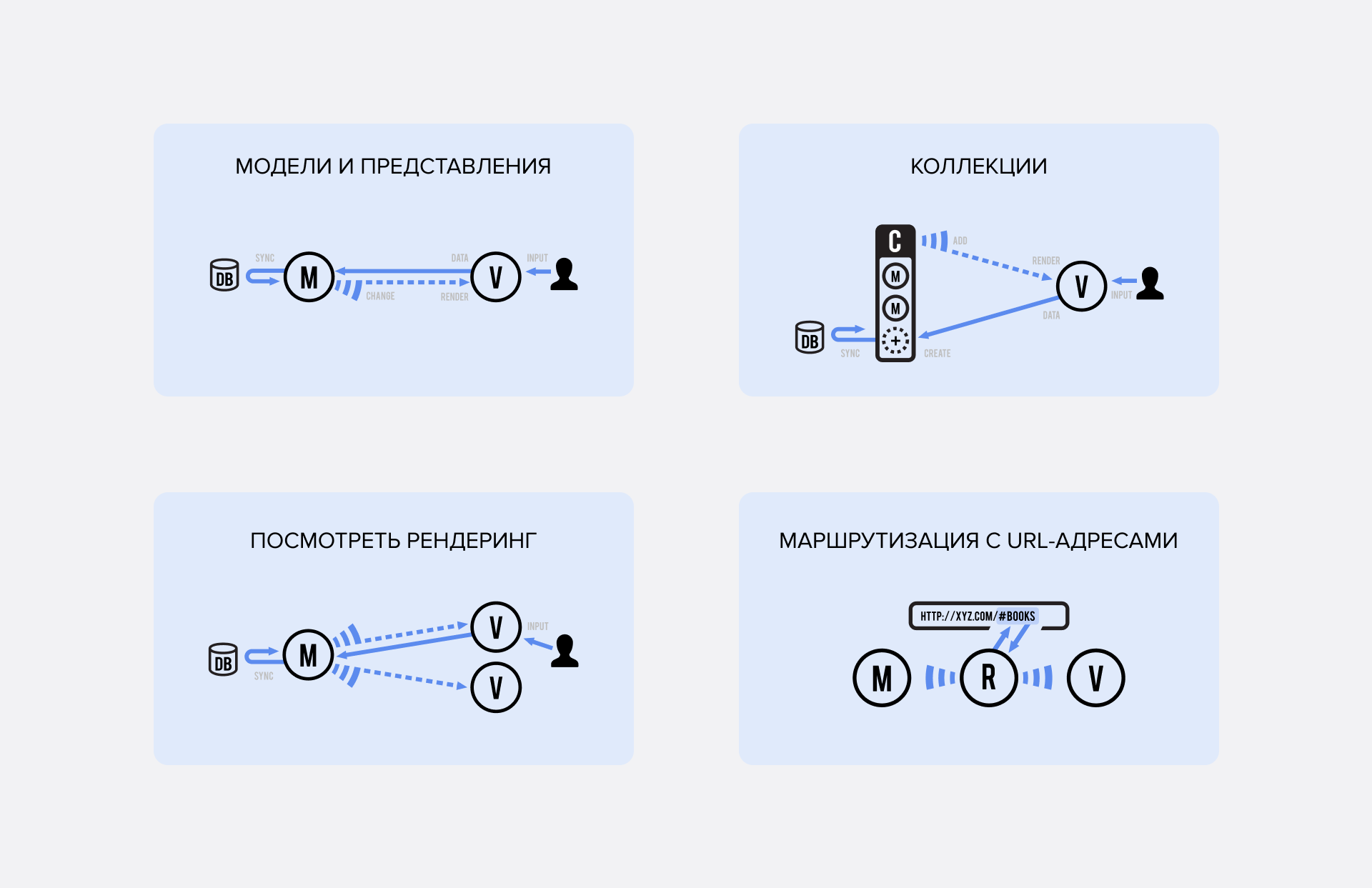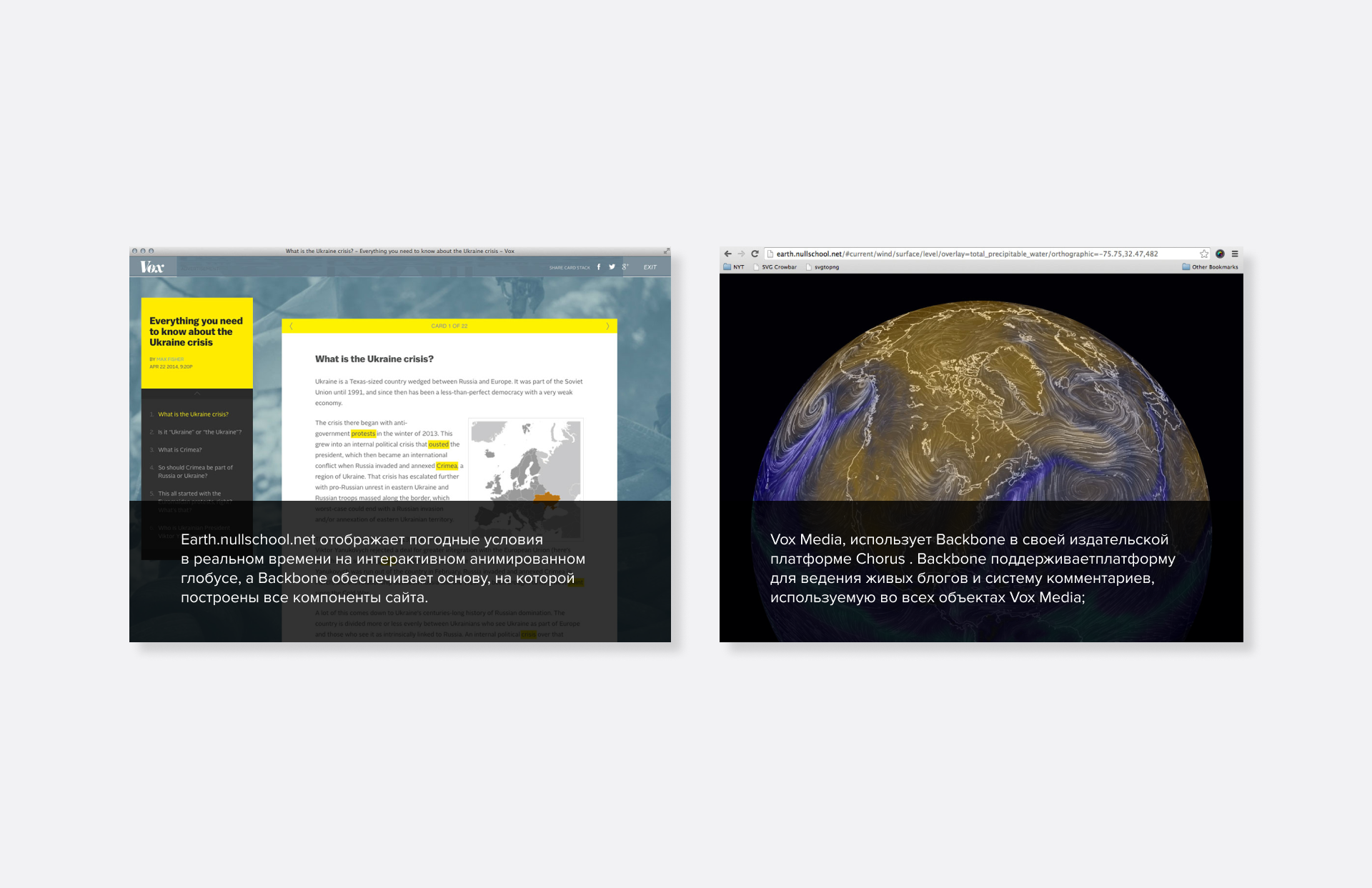
BACKBONE.JS
Backbone.js is a JavaScript library that simplifies the creation of complex user interfaces. It is a set of rules and tools for organizing code, a clear and logical framework for web applications.
Backbone.js structures Javascript code in the MV (Model-View) style and adds events, collections with APIs for functions, and declarative event handling for views. It allows you to separate business logic from the user interface, and as a result, front-end development will be faster and the result will be of higher quality.
Front-end developers love Backbone.js for its concentrated, well-documented, easy-to-read code. This is logical, because the library's task is to put your program's code in order. Thanks to Backbone.js, it will be broken down into semantically meaningful files that are easier to work with, both for a single developer and in a team. The library itself weighs practically nothing and consists of small objects that simply simplify the implementation of fundamental interactions. The main thing is that even if there are a lot of interactions, and some of them are added much later than others, it will still be very easy for developers to manage them.
There are no design patterns in pure JavaScript, and without the use of frameworks, any complex code needs to be structured manually. This is fraught with a huge number of non-obvious problems, in addition to the main ones - the difficulty of maintenance and modification. Backbone.js solves these problems by determining where data, functions, and connections between them will be stored. This is exactly what the adaptation of the MV design pattern is responsible for. Developers will have models and collections for representing data, tools for updating the DOM and collaborating, and much more.
The Model in a web application with Backbone.js, as in other cases, is a database and business logic. It is responsible for managing these components, downloading data from the server, and triggering an event when they change. The View will react to these changes and redraw the UI, as well as process user actions with the interface and send them to the Model. These components do not know anything about each other and interact only by listening and sending events. To make it all work even better, models can be organized into collections to keep track of all changes in one place. In addition, Backbone.js has built-in synchronization with the RESTful API, allows you to customize rendering in any convenient way, add convenient URL routing, and much more. All of these are tools that facilitate the work on the interface, making the web application code clean, structured, and understandable. This not only speeds up development and simplifies maintenance, but also makes the project more reliable and stable in general.
Backbone.js is a lightweight and useful library for developing JavaScript applications. Its task is to structure the code and make working with it easier and more convenient.
Not all projects need Backbone.js, but only those that have a technically complex, though possibly simple, user interface. If you don't use it when you need it, you'll have to build the necessary functions from many other libraries or write them manually. This is not only time-consuming, but also unprofitable in terms of project support and stability. You will know whether your JavaScript application needs the Backbone.js framework before you start development, after analyzing it.


